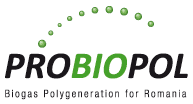
9. What kind of preliminary treatment do the substrates need?
The substrates have to undergo preliminary treatment before they are suitable to go into the digester of the biogas plant. The kind of treatment is highly dependent on the character of the fermentation (dry or liquid). Generally speaking, the dry matter should not be too high. Substrates with a percentage of 12 % dry matter are the best for liquid fermentation. In this way transport and mixing are easy.
Liquid fermentation:
Current fermentation method is the liquid fermentation because the input substrates consist of less than 40 % dry matter, are fluid and not stackable. For pumping in the digester the substrates should be moist till 12 % dry matter.
Liquid manure and the co-substrate are stored and, if necessary, get separated from contraries. Then they are chopped, mixed or thinned down. Slaughterhouse waste or animal by-products have to be sanitized in order to eliminate all germs.
Dry fermentation:
The dry fermentation is not a current method since most input substrates have a low dry substance. When using the dry fermentation method, the input substrate should have a dry matter above 45 % and better is to stack them in the digester-container.
This kind of fermentation uses free flowing substrates which are not fluid or suitable for pumping. This kind of process is mainly for biogas plants which do not use liquid manure as the main substrate and safes a lot of water.
In Germany, liquid fermentation is the general method, albeit the dry fermentation is a good alternative for crops, hay and straw.
- What is biogas?
- Why is biogas sustainable?
- What are the potentials of biogas?
- What is industrial biogas polygeneration?
- What is anaerobic digestion?
- What is the standard process of biogas production?
- How is biogas used?
- What materials are fed into a biogas plant (input)?
- What kind of preliminary treatment do the substrates need?
- What kind of components does a biogas plant have?
- What kind of gas cleaning is necessary?
- What outputs does a biogas plant have?

